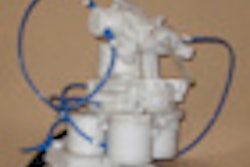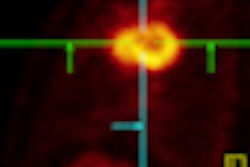
NEW YORK (Reuters Health) - Compared with conventional grayscale ultrasonography, transrectal real-time elastography (RTE) improves the detection of prostate cancer -- but it's not ready for prime time yet, German researchers say.
"RTE is not ready yet to be the new 'standard' in terms of local staging prostate cancer," Dr. Marko Brock told Reuters Health by email. "But our study appears to show that RTE is a much better tool compared to grayscale ultrasonography when evaluating the preoperative tumor burden."
Grayscale ultrasonography (GSU) is the most frequently used, cost-effective imaging technique, but lesions can appear hypo-, iso- or hyperechoic, as Dr. Brock and colleagues at Ruhr-Universitat Bochum, Herne, note in an August 5 online paper in BJU International.
They say ultrasonically-based RTE can detect the lower elasticity caused by higher cell density in malignant tissue, and its sensitivity reportedly ranges from 57% to 100%, but until now it hasn't been compared to conventional GSU.
In their new study, the authors used both methods to screen for cancer-suspicious areas in the prostate and for extracapsular extension in 229 men with biopsy-proven prostate cancer.
Histology studies were positive in 894 evaluated sectors. RTE correctly detected 594 (66.4%), and GSU found 215 (24.0%). Sensitivity was 51% with RTE and 18% with GSU. Specificity was 72% and 90% with RTE and GSU, respectively.
Forty-seven patients had extracapsular extension. RTE was 38% sensitive and 96% specific; GUS was 15% sensitive and 97% specific.
Overall, lesions with a higher Gleason grade had a higher likelihood of identification on RTE. But the researchers note that because of its low sensitivity and specificity, transrectal ultrasonography is not recommended in the European guidelines for local staging of prostate cancers or extracapsular extension.
They conclude that while adding the attributes of tissue elasticity to current grayscale imaging provides a statistically significant benefit, "improvement is still needed to achieve a clinically meaningful sensitivity."
By David Douglas
Source: http://bit.ly/oQIKIO
BJU Int 2011.
Last Updated: 2011-08-22 17:04:13 -0400 (Reuters Health)
Copyright © 2011 Reuters Limited. All rights reserved. Republication or redistribution of Reuters content, including by framing or similar means, is expressly prohibited without the prior written consent of Reuters. Reuters shall not be liable for any errors or delays in the content, or for any actions taken in reliance thereon. Reuters and the Reuters sphere logo are registered trademarks and trademarks of the Reuters group of companies around the world.



















